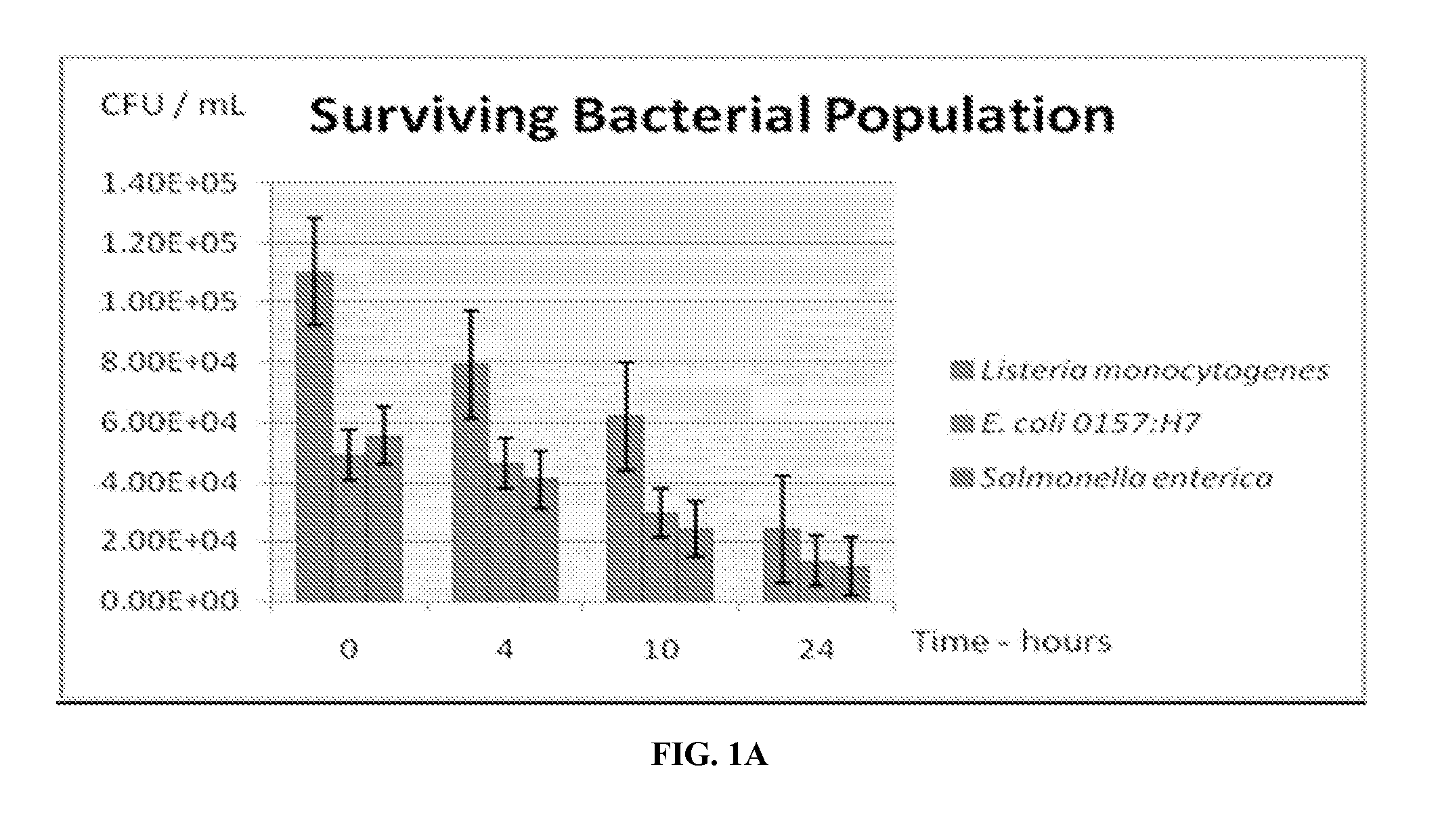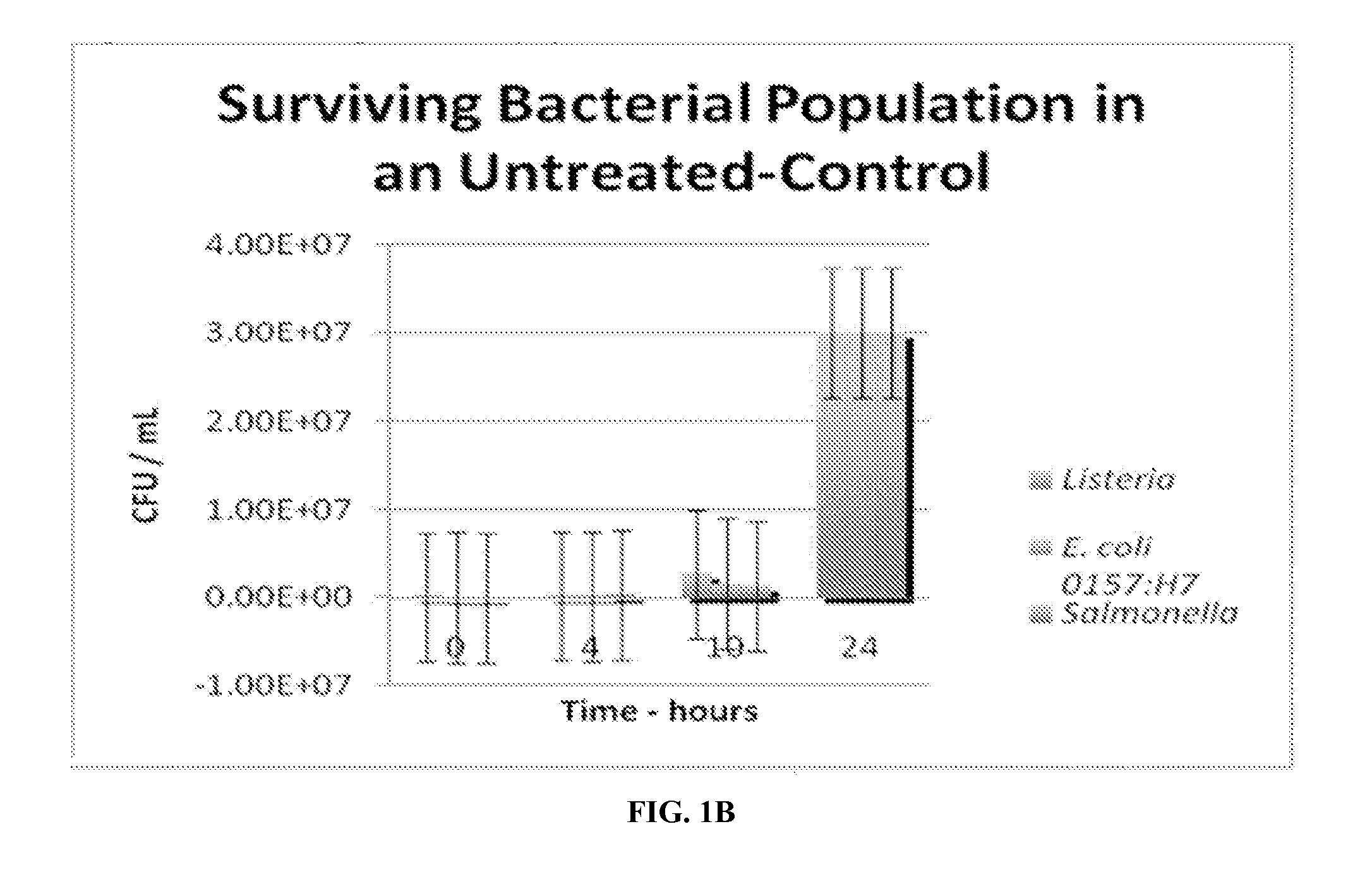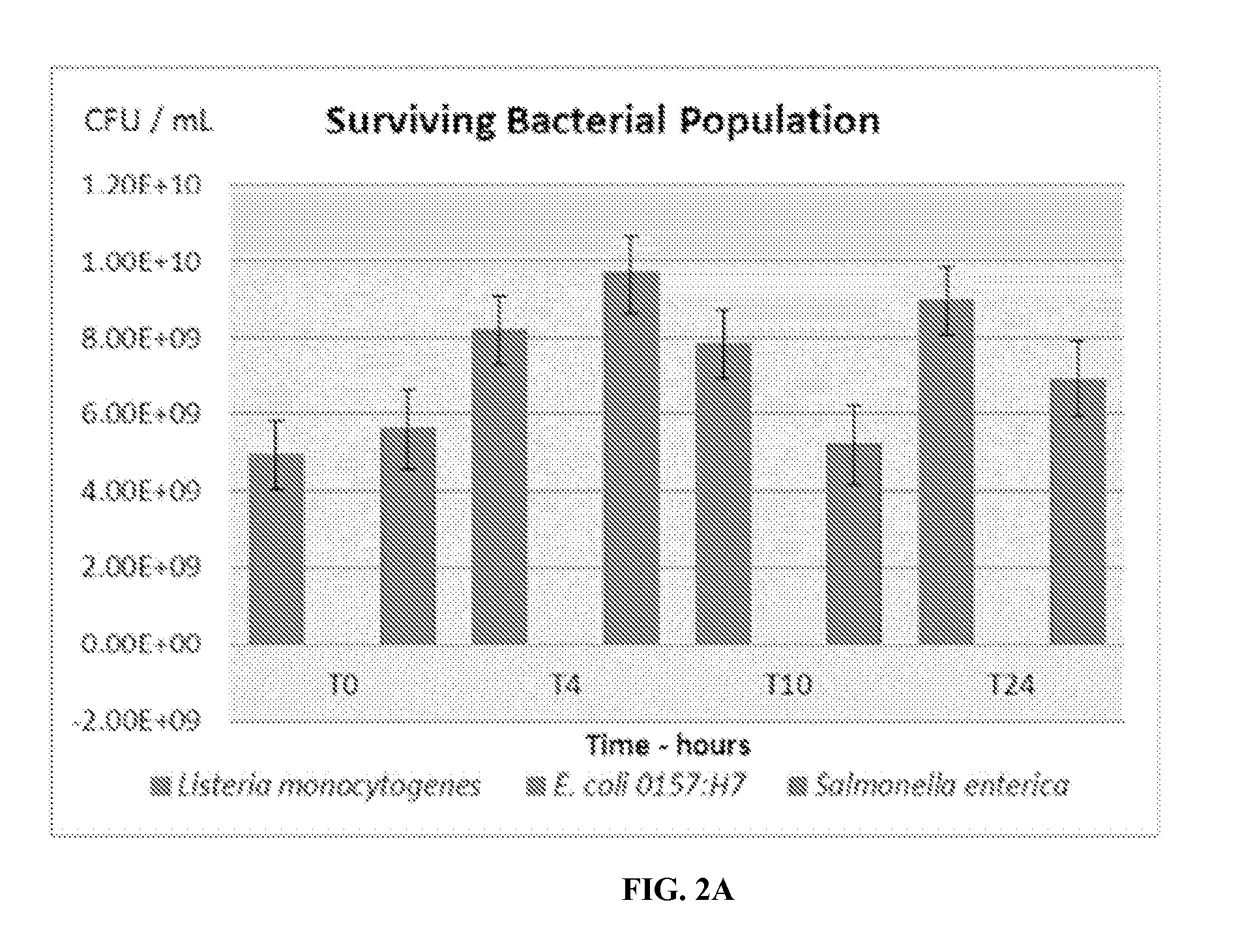Composition for improving flavor of and inhibiting growth of pathogenic bacteria in meat and poultry
a technology of pathogenic bacteria and compositions, which is applied in the field of compositions and methods for inhibiting the growth of pathogenic bacteria in meat and poultry, can solve the problems of food products containing off-flavor, unfavorable consumer-friendly chemicals, and serious shelf life associated with microbial spoilage, and achieves the effect of improving flavor profile and prolonging shelf li
- Summary
- Abstract
- Description
- Claims
- Application Information
AI Technical Summary
Benefits of technology
Problems solved by technology
Method used
Image
Examples
example 1
[0121]Concentrations of the antimicrobial composition (coded GPI AMX3, 96% buffered vinegar 2% rosemary extract, and 2% garlic extract) of the present invention were prepared in triplicate at 2.5% (7.5 mL of the concentrated solution+292.5 mL of diluent). Listeria monocytogenes, Escherichia coli O157:H7 and Salmonella enterica bacteria were grown separately on Tryptic Soy Agar with 5% Sheep's Blood (TSAB) for 2 days and then standardized to approximately 10,000 or 1,000,000,000 CFU / mL using spectrophotometry. In triplicate, 2 mL of the standardized culture was treated with 18 mL of 2.5% antimicrobial solution and incubated at 35° C. for 4-hour, 10-hour, and 24-hour treatments. Initial treatments and inoculated treatments were serially diluted, plated on TSAB, and incubated at 35° C. for 48-hours and microbial growth was quantified.
[0122]Percentage kill-rates for antimicrobial solution GPI AMX3 (concentrated at 2.5%), were determined for Listeria monocytogenes, Escherichia coli O157:...
example 2
[0125]Example 2 demonstrates the impact of the present invention on shelf life of food products by inhibiting or suppressing bacterial growth over an extended period of time. Artificially inoculated ‘Ham’ products were each formulated by one of 5 different treatments and were challenged with enteric pathogens. The growth potential of Listeria monocytogenes, E. coli, or Salmonella spp in treated products were determined.
[0126]The compositions of the 5 treatments tested are as follows:
[0127]Treatment 1: control;
[0128]Treatment 2: 96% buffered vinegar 2% rosemary extract, and 2% garlic extract;
[0129]Treatment 3: 95% buffered vinegar, 2.5% orange powder, 2.5% lemon powder;
[0130]Treatment 4: 99% buffered vinegar, 0.5% rosemary extract, 0.5% garlic extract; and
[0131]Treatment 5: buffered vinegar only.
[0132]Materials And Methods
[0133]The product / treatment(s) challenged by E. coli, Salmonella spp., and L.monocytogenes are described in Table 19. A septum (GE, Silicone II, 100% Silicone, clea...
PUM
 Login to View More
Login to View More Abstract
Description
Claims
Application Information
 Login to View More
Login to View More - R&D
- Intellectual Property
- Life Sciences
- Materials
- Tech Scout
- Unparalleled Data Quality
- Higher Quality Content
- 60% Fewer Hallucinations
Browse by: Latest US Patents, China's latest patents, Technical Efficacy Thesaurus, Application Domain, Technology Topic, Popular Technical Reports.
© 2025 PatSnap. All rights reserved.Legal|Privacy policy|Modern Slavery Act Transparency Statement|Sitemap|About US| Contact US: help@patsnap.com



